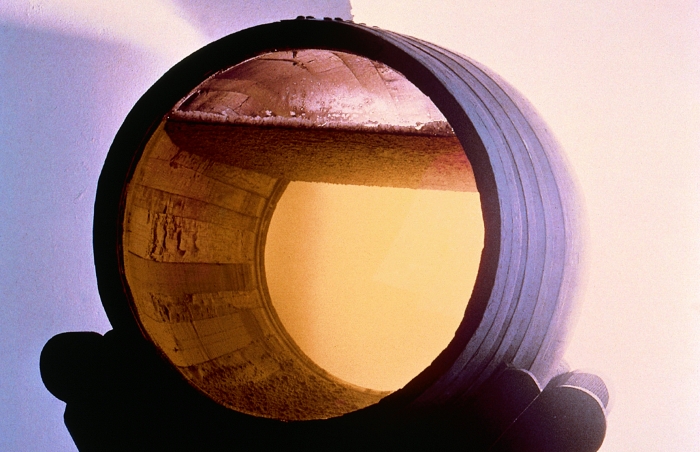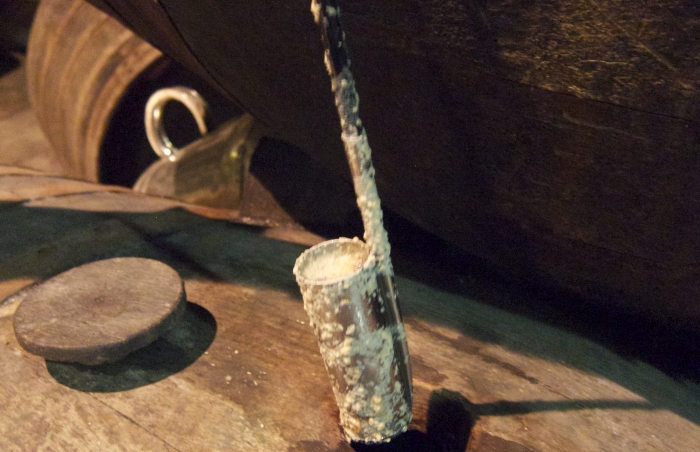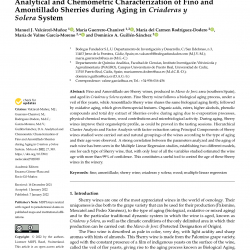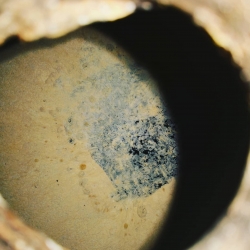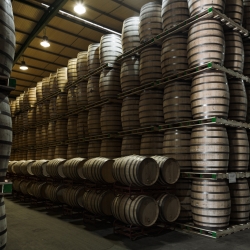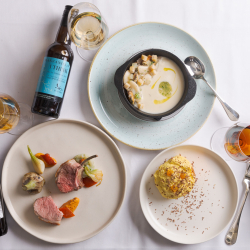Jamie on: flor
There are two paths that a young sherry can take. The first is called biological ageing; the second oxidative. And this fork in the road taken by a young sherry is decided by the presence or absence of a greyish white layer of goo growing on top of the wine in barrel, known as flor. If it is present, then the wine develops biologically, and this flor contributes distinctive flavour characteristics that are highly desirable.
Until this decision is made, all sherry starts out as a dry white wine known as ‘mosto’. In the old days, when all sherry was fermented in barrels, the classification of wines would have been an immense task; these days, most is fermented in much larger stainless steel tanks, and so it makes life for the cellar master a lot easier. Generally speaking, the lighter, more delicate wines from the best pagos (vineyards) are chosen for biological ageing, and they are put into barrels that are deliberately only 80% filled, in order for the layer of flor to grow at the interface between the air and the wine. The wine is fortified to around 15.4% alcohol, which is close to the limit for flor growth, but any lower and less desirable microbes might be encouraged to grow with the attendant risk of spoilage. Wines for oxidative ageing are fortified to 18% alcohol, so nothing can grow in them.
Technically, the flor (or ‘velum’ as it is also known) is a biofilm made up of the yeast Saccharomyces cerevisiae. This is the same species of yeast that carries out alcoholic fermentation, but it is a specially adapted version that is able to cope with the rather hostile conditions found in a sherry cask. The challenges facing the yeast are quite extreme: the wine in cask is quite acidic, has high alcohol, very little sugar, and there is also around 30 mg/litre of sulphur dioxide. But the flor yeast has adapted its cell wall so that it floats and is able to form a surface film where it is able to access the oxygen needed to metabolise the alternative carbon sources of alcohol and glycerol. It also has efficient antioxidant defences to cope with the increased oxidative stress this lifestyle brings.
How does the flor affect wine flavour? If the layer is thick enough, it protects the developing wine from the air present in the top of the barrel, which means that unlike an oloroso, which turns brown, the sherry under this layer stays fresh and pale in colour. As the yeast feeds off alcohol, it produces acetaldehyde, which has flavours of nuts and apples, and in this process the alcohol level of the sherry is reduced by around 0.2-0.3% a year. Acetaldehyde levels in a Fino or Manzanilla are typically around 300-400 mg/litre, but can be as high as 800. Glycerol, another important wine component, is also consumed by the yeasts, and dips from a starting level of around 7 g/litre down to around 0.3 g/litre, which changes the mouthfeel, making the wine feel less viscous and fresher and lighter. There’s also an increase in the levels of a compound called sotolon, which adds spicy, curry nut notes.
Two factors help increase the thickness of the flor layer. The first is the way that sherry is made in the solera system: new wine is being introduced into each barrel at various stages, using a special ‘canoe’ device that doesn’t disrupt the flor, and this brings with it fresh nutrients to keep the yeast cells growing healthily. The second is the cellar environment: cooler, more humid conditions make for a thicker flor layer. Consequently, the coastal towns of Sanlúcar de Barrameda and El Puerto de Santa Maria tend to have higher levels of flor, and there are also seasonal changes with thicker flor in spring and autumn. Should the flor struggle or die, then the sherry can be fortified further to 17or 18% alcohol, and then it begins its second, oxidative journey. This is then an amontillado.
So we have a lot to thank these surface-dwelling yeasts for. What looks alarmingly like a case of microbial spoilage is actually responsible for some of the wine world’s most unique and thrilling flavour experiences.
Coming next: Jamie Goode looks at what role oak plays in ageing Sherry wines.
The views and opinions expressed in this article are those of the authors and do not necessarily represent those of El Consejo Regulador.


12 May 2016


